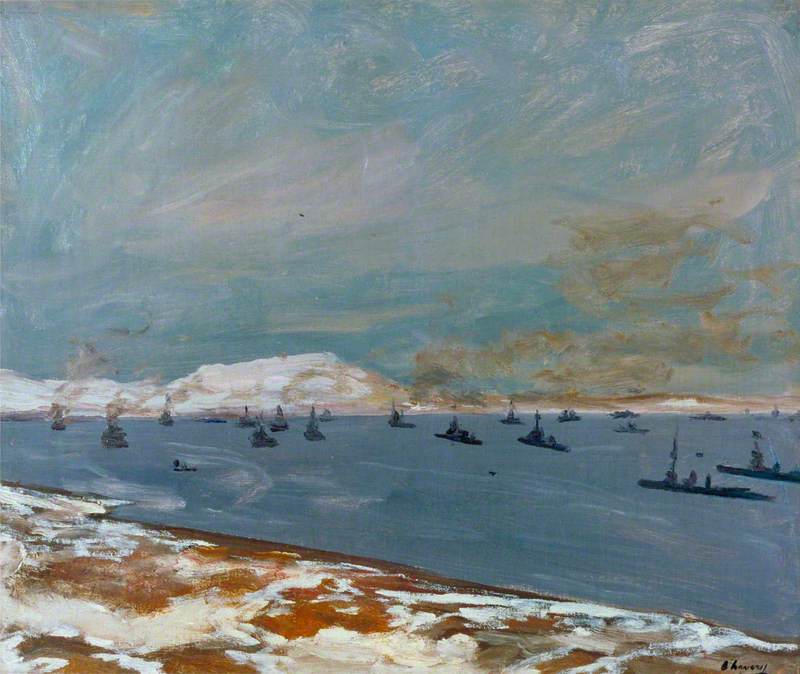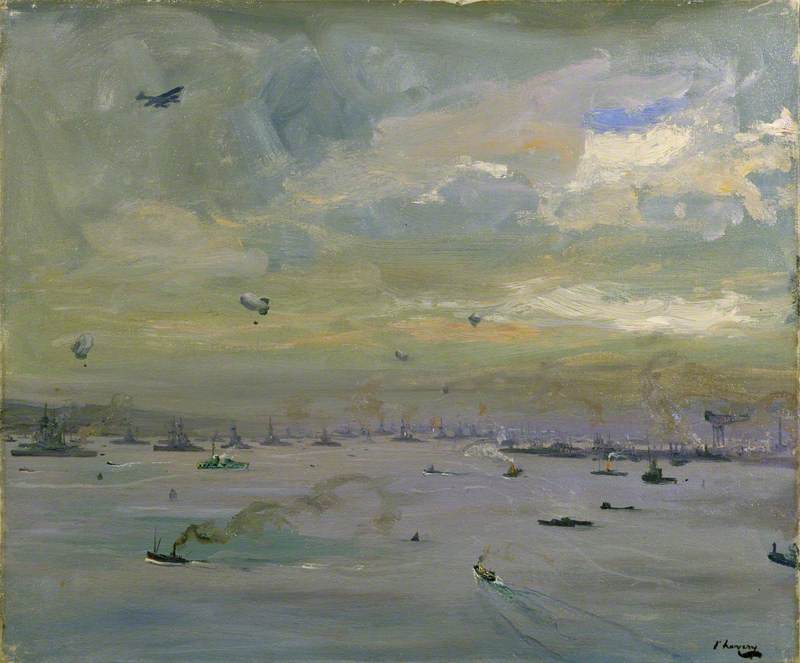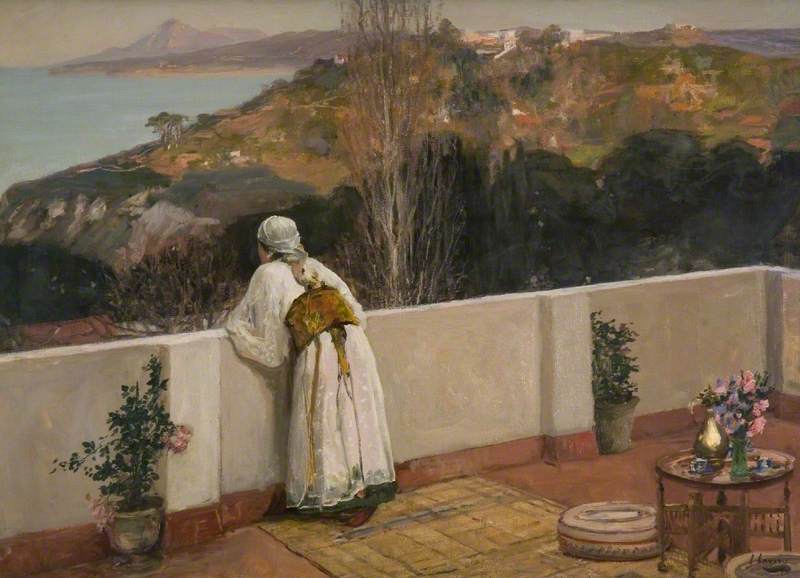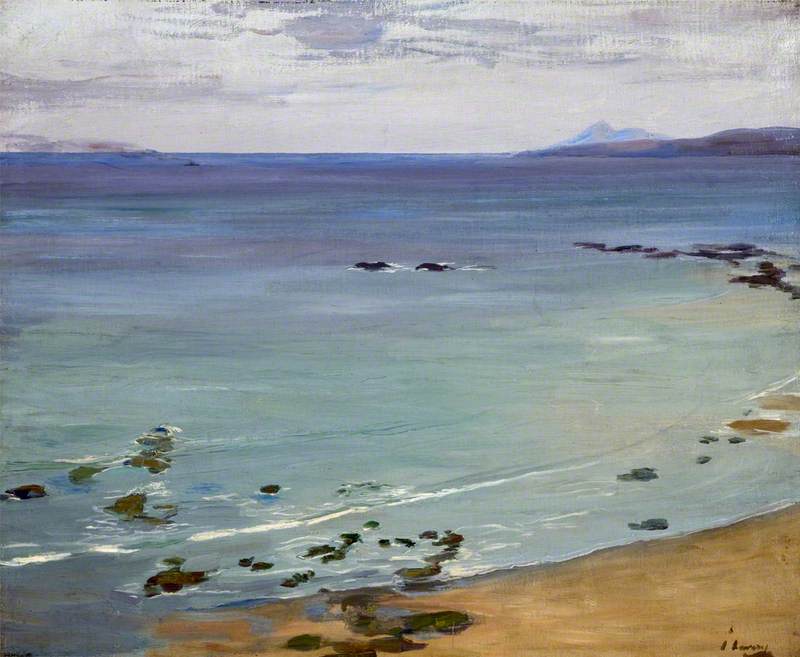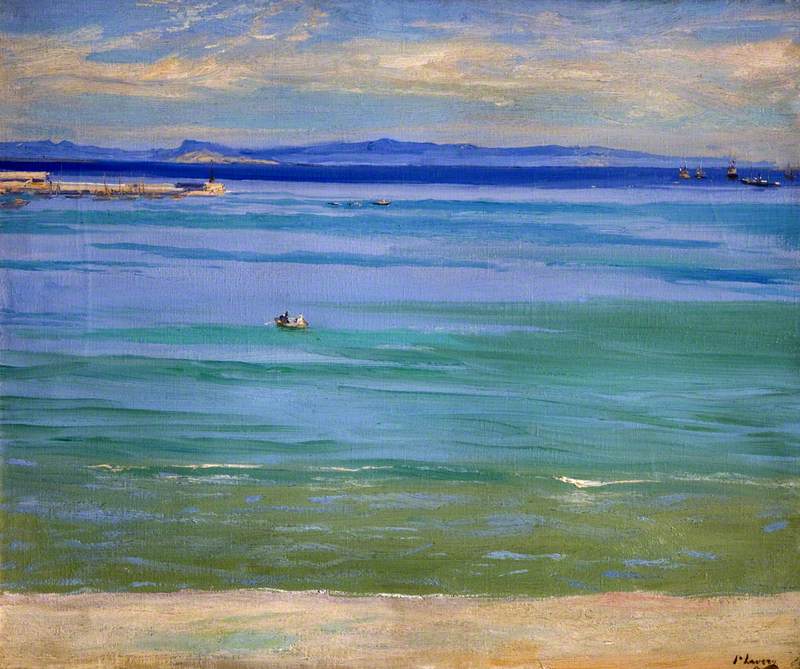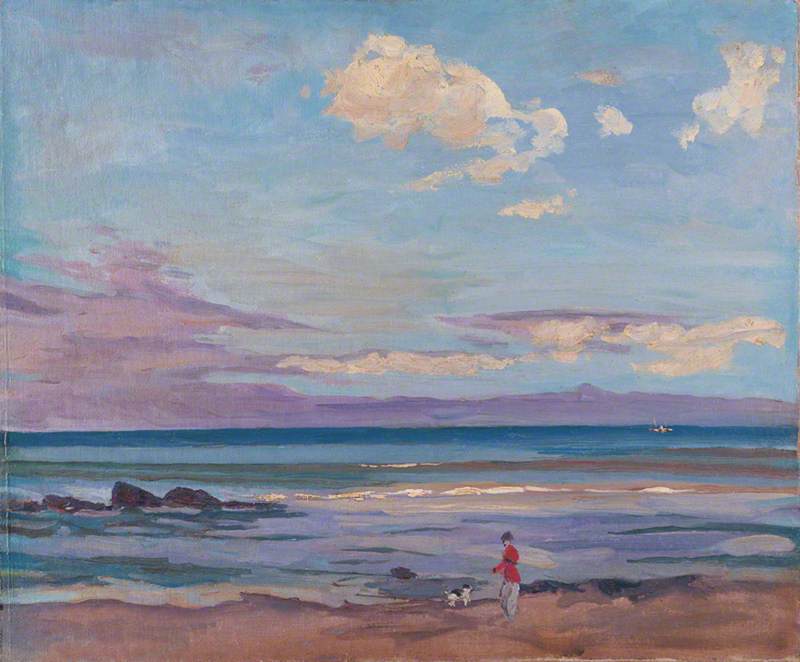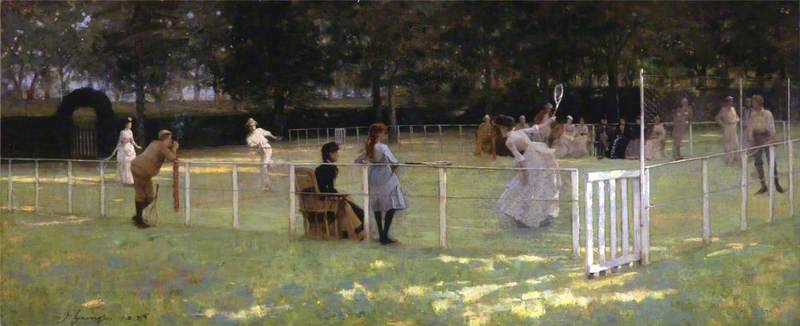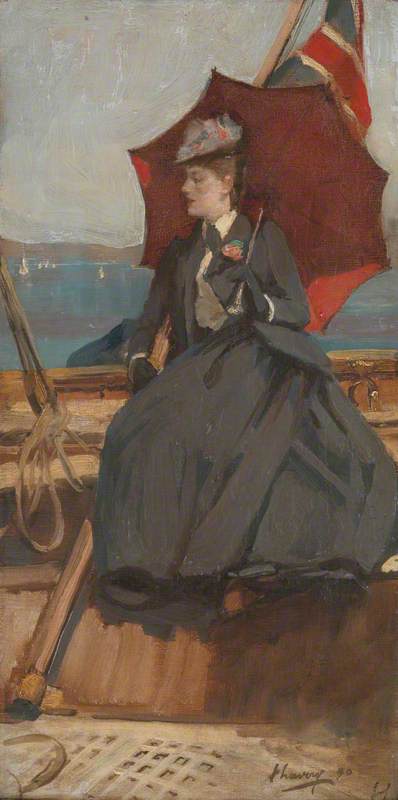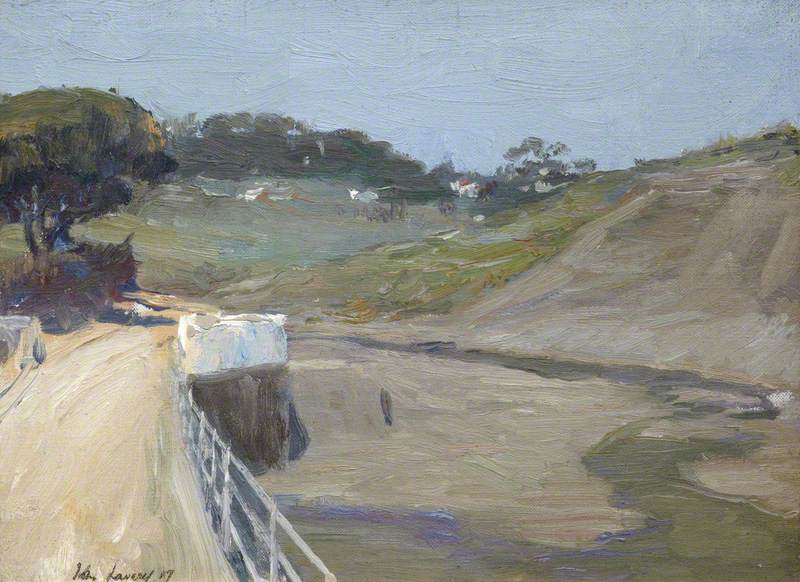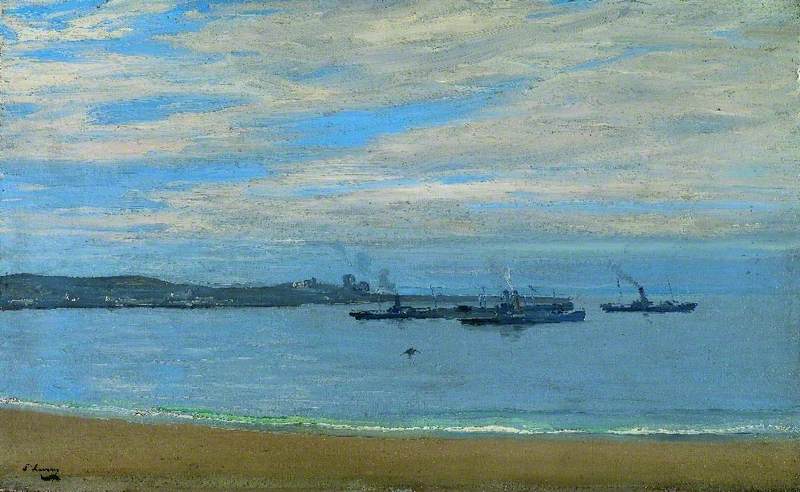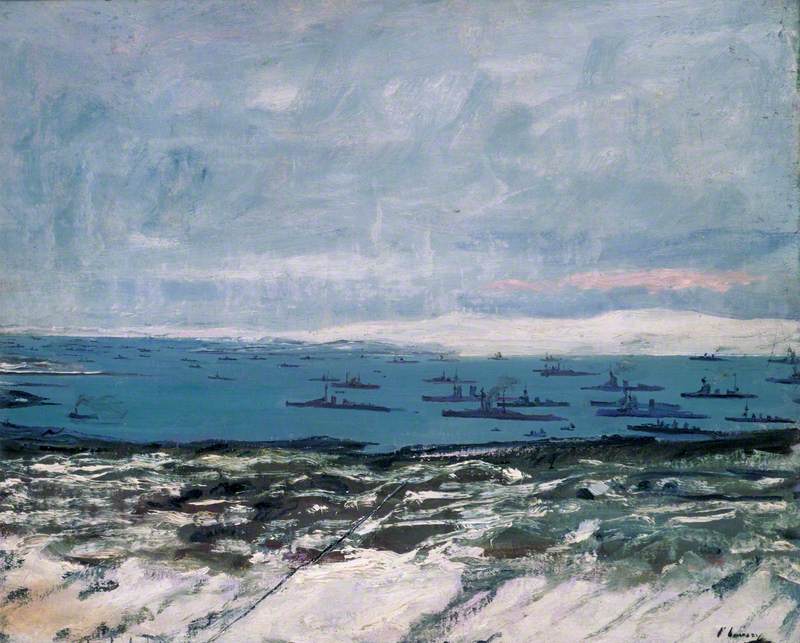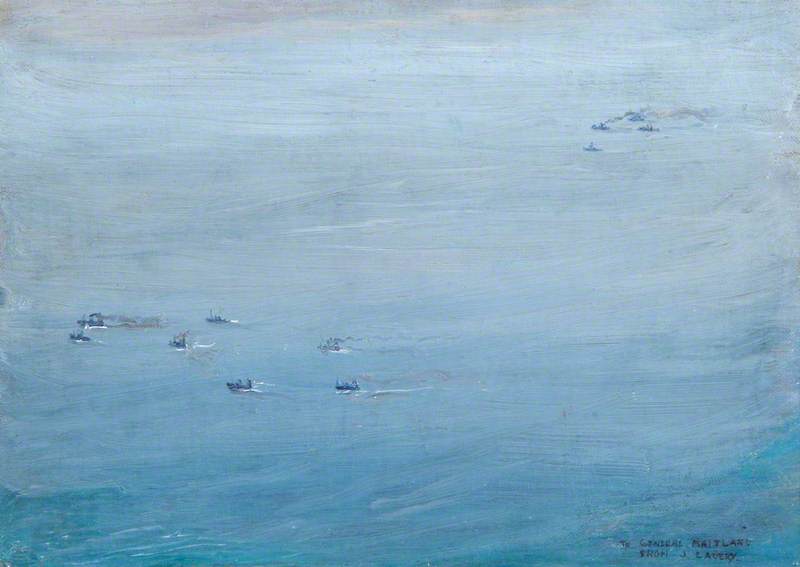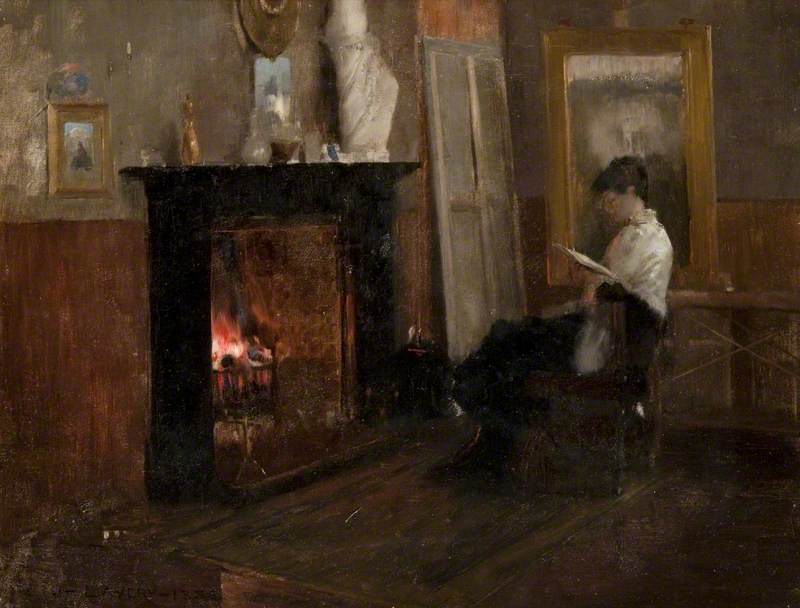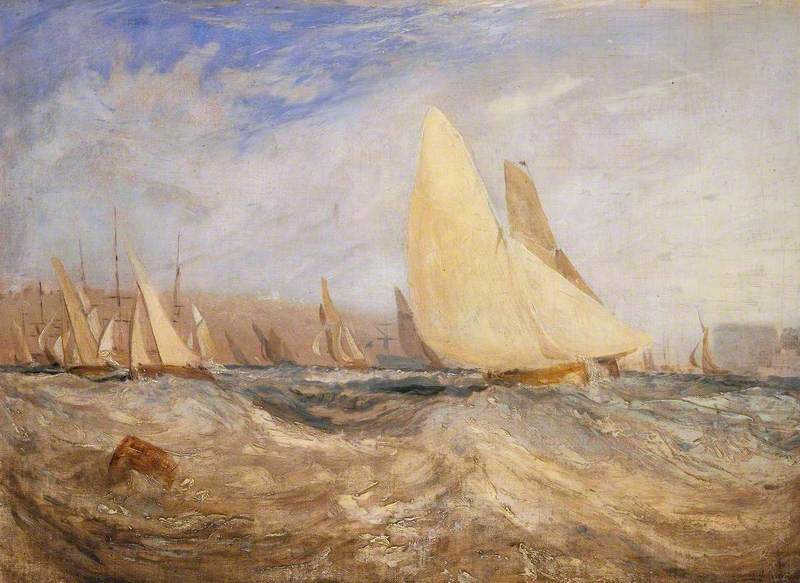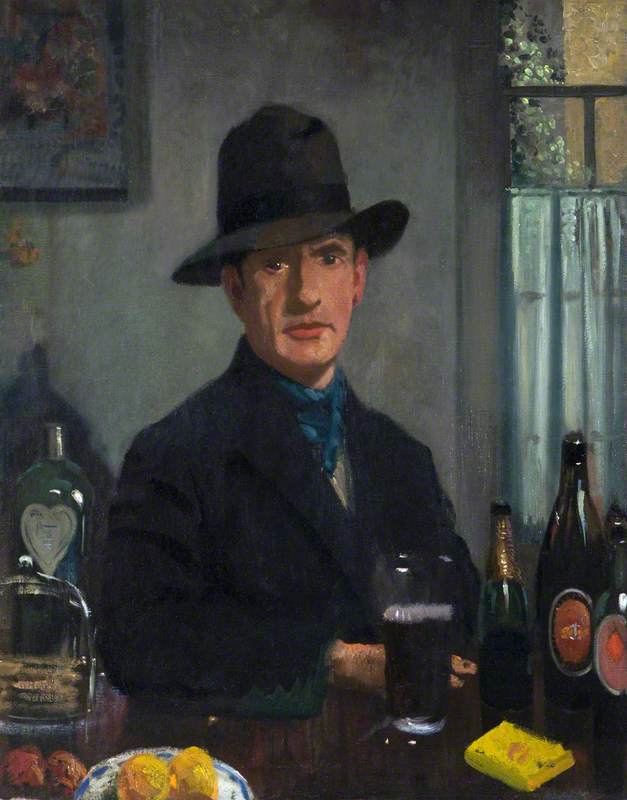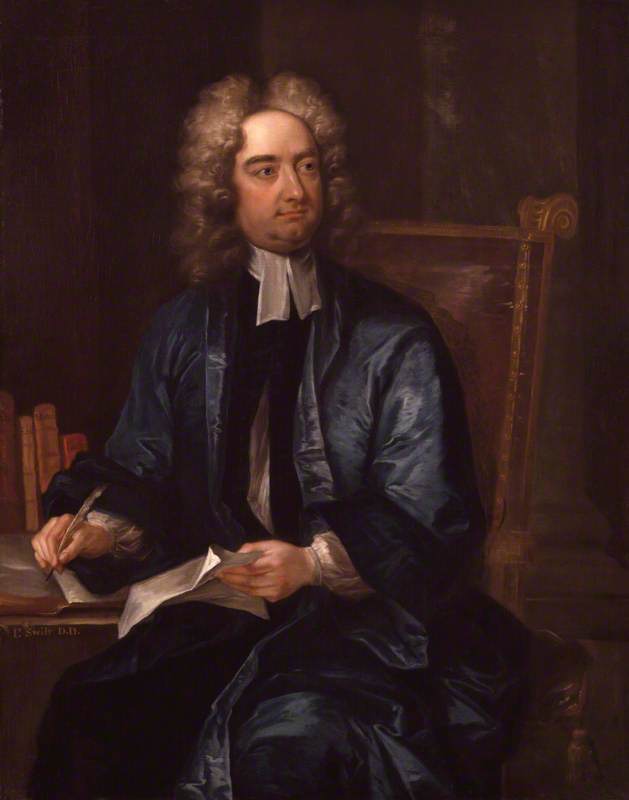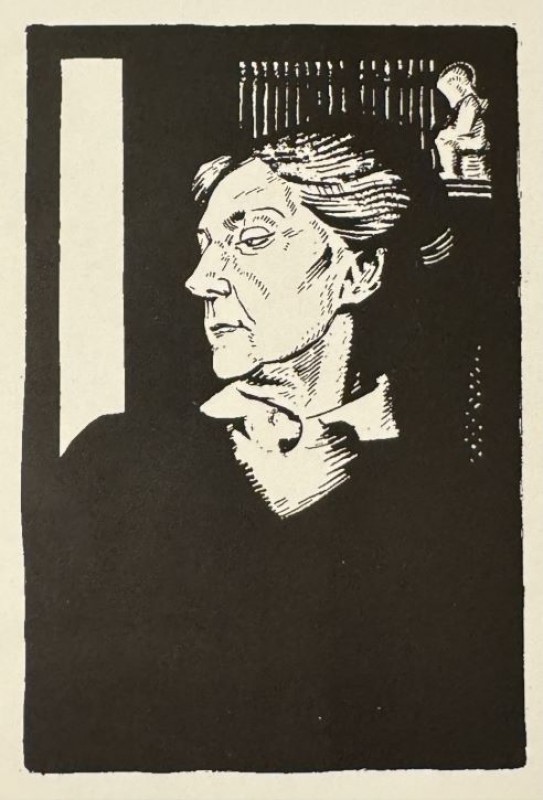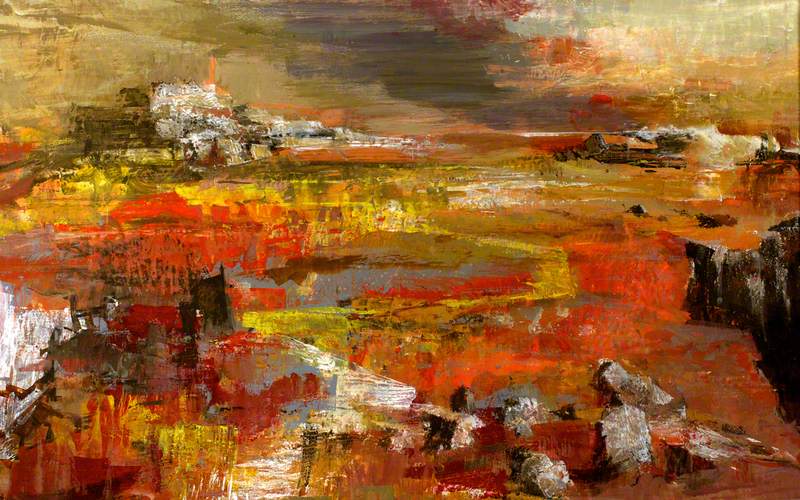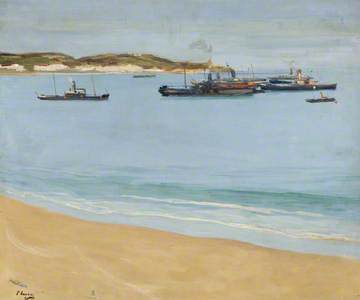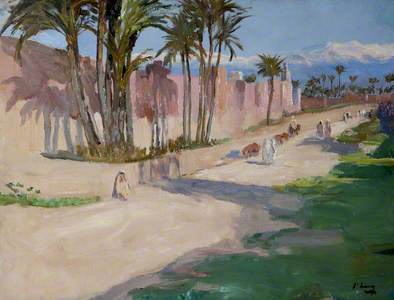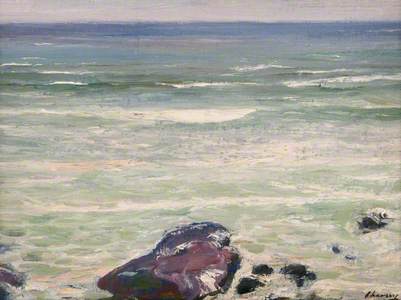On 3rd March 1917, John Lavery, his wife, Hazel, and stepdaughter, Alice, checked in at the four-storey seafront Hotel de l'Angleterre in Saint-Jean-de-Luz in southwest France. The painter reported enthusiastically on the 'big glass terrace opening off the salon which I am using as a studio, all overlooking the beach with the blue Pyrenean peaks in the background'.
The weather was improving, and he was keen to start work. 'The place', he concluded (in a letter to Eileen, his daughter), 'is the loveliest we have yet seen, and we are all "basking"'. Eileen would have caught the irony in the inverted commas, for 'basking' was a skill Lavery had never acquired. The others might sit in the sun, but for the restless painter, the sea, the shore and the distant headlands provided opportunities not to be squandered.
He had, of course, been waiting three years for this. Prior to the outbreak of war, Lavery was away from London for at least three months every year and most of this time was spent at his house and studio on a hilltop on the outskirts of Tangier. From its rooftop, not only could he survey the Straits of Gibraltar, but a short walk took him down to the beaches around the city. These are portrayed in two canvases, donated to Belfast Museum and Art Gallery in 1929.
In the first of these, he looks towards the 'Pillars of Hercules' – the Rock of Gibraltar and Jebel Musa in Morocco – that signalled the gateway to the Mediterranean for ancient mariners. Painted 'after rain', its smooth transitions convey a moment of calm when the sky has yet to clear.
Its companion, painted in full sunshine ten years later, is richer in colour with shafts of emerald, ochre and white defining the flat plane of marine blue. Straight ahead of him, in this later painting, is the coast of Andalusia with the recently extended jetty of Tangier harbour just visible on the left. The sea was forever changing, its surface combining local colour with reflections and hidden depths, such that it had become an obsession.
Each year, from 1907 onwards until the outbreak of war, there were variants on these compositions. The rocks to the left and right of the 'rain' painting, at low tide, become very familiar, as do the contours of both coastlines. Views of the strand leading up to the Kasbah; Cape Malabata; aerial views looking down on the Straits from his house on Mount Washington; scenes of the more secluded sands, and black rocky outcrops at the base of the Mount. On occasions, when he stands on the beaches on a clear day, we are treated to splendid cloudscapes. They come to us in standard formats – 10 by 14 and 25 by 30 inches – with some smaller and larger exceptions. Sometimes they form a connected series of works.
The Southern Sea
1910, oil on canvas by John Lavery (1856–1941) 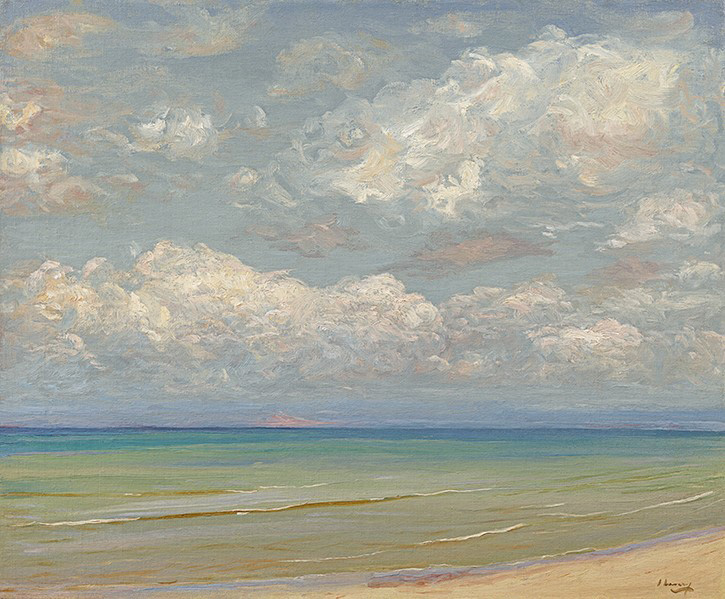
Turquoise Sea No. 1
c.1912, oil on canvas by John Lavery (1856–1941) 
Then, figures – 'Moors' at first, then members of his family – cross the foreground, giving scale to the immensity. There are morning rides along the shore, Arab strollers, women backing into the Sirocco and pulling on their hats. Even when the sea turns a livid green and the sky is ominously calm, they invade the shoreline.
A Grey Day, Tangier
1911, oil on canvas by John Lavery (1856–1941) 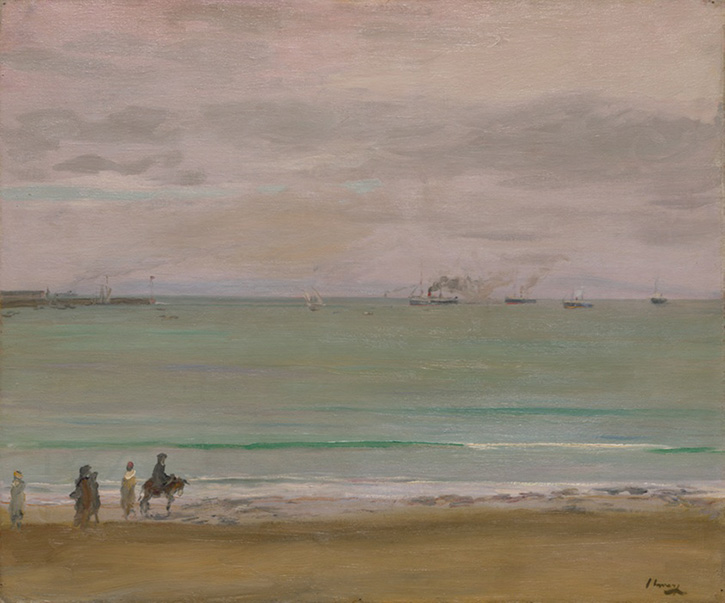
In one memorable instance, Hazel Lavery's familiar scarlet jacket is spotted on the shore as she exercises a lively Jack Russell her daughter had recently befriended. It was a painting Lavery's pupil, Winston Churchill, pulled from the racks in the studio at Cromwell Place in South Kensington, for one of several freehand copies he made when learning to paint.
Evening, Coast of Spain from Tangier
1911, oil on canvas by John Lavery (1856–1941) 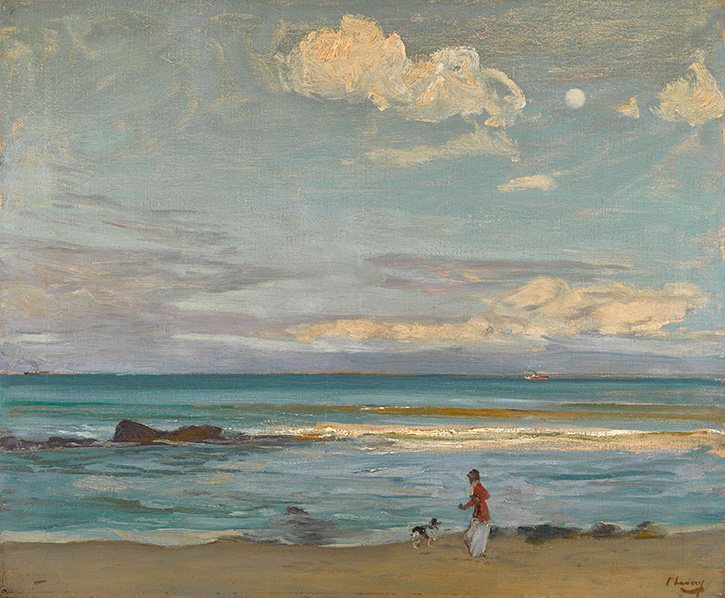
Lavery's first encounter with the sea was as an orphan child of ten, consigned to the Belfast/Ardrossan boat and employment with a distant relative in Saltcoats, Ayrshire. Picaresque adventures followed before he found his vocation in early morning art classes for working people in the progressive Glasgow School of Art. In 1884, he found a group of like-minded young painters associated with Glasgow Art Club on Bath Street. This became 'like a brotherhood of the early Christians' according to his lifelong friend, Robert Macaulay Stevenson.
When Lavery returned to it as a painter in 1887, the Irish Sea was viewed from Drumalis, the splendid residence at Larne of his patron, Hugh Smiley. Letters reveal Lavery's unsuccessful attempts to lure other friends from Glasgow (the Glasgow Boys) to the Antrim coast when he returned with a large, unfinished group portrait and several small, grey seascapes. Within a year, his reputation outstripped the others when he gained a medal at the Paris Salon with The Tennis Party. Immediately thereafter, when he received the commission to paint Queen Victoria's state visit to the International Exhibition of 1888, his pre-eminence was confirmed.
State Visit of Her Majesty, Queen Victoria to the Glasgow International Exhibition, 1888
1890
John Lavery (1856–1941) 
Respite from this latter monster-piece was provided by boating trips with friends and patrons in the Clyde estuary, during the summer before his first visit to Tangier in January 1891.
He was approaching his 35th birthday when he hiked up to Tangier's Custom House at the harbour in January 1891 with sand on his boots. Travellers had claimed that being deposited on the beach by a dhow-taxi (a wooden boat) from a passing P&O 'Indiaman' ship, and finding the city gleaming before them in the sunlight, was breathtaking in itself. Instantly, the light and air, alleys and archways of the ancient Kasbah captivated Lavery.
It wasn't, it must be stressed, Lavery's original idea to visit this 'instant Orient', no more than five days by steamer from Tilbury. John Singer Sargent, Arthur Hacker, Solomon Joseph Solomon, James Coutts Michie, Norman Garstin, George Denholm Armour, Joseph Crawhall and others had already been. His close associate in the Glasgow Boys, Arthur Melville, had recently returned from his first visit to Tangier.
Unlike his immediate contemporaries, Lavery was the only artist to establish a home in Tangier, when the city was under intense scrutiny by the 'great powers', and when the local 'Basha' (a person of authority), under the nose of the Sultan, was selling plots of land to western speculators. At this point in his life, the sea was a constant presence and although local unrest made Hazel Lavery increasingly nervous, her painter-husband, scanning the Straits daily, felt safe – until that is, U-boat patrols in the Bay of Biscay placed the house on the north African hilltop out of bounds.
By the beginning of 1917, however, the Laverys felt confident enough to risk a channel crossing. Paris was grim and, after a few days, they travelled south to the Duke of Westminster's hunting lodge in Landes, France, before repairing to Saint-Jean-de-Luz, where the painter immediately set to work on a sequence of views of the bay: seven, so far, have emerged.
This sheltered harbour was an ideal assembly point for cargo vessels forming convoys to face the treacherous waters ahead. Lavery would paint them both at ground level on good days and from the upstairs windows of the hotel.
The Harbour at Saint-Jean-de-Luz, France: Early Morning
1917
John Lavery (1856–1941) 
The variations he would play at Saint-Jean-de-Luz were those of a maestro. In art, spontaneity is only tolerable when it comes as the by-product of mastery. The Saint-Jean-de-Luz études prepared him, a few months later, for tours of naval bases as an Official War Artist, when, on one occasion in the dead of winter, donning an electrified suit wired up to huge unwieldy batteries, he stood on the ice painting the fleet at Scapa Flow. Seven months later, on convoy protection patrol, he leaned out from an airship gondola window to sketch intrepid observers scanning the sea for signs of submarines. It was a subject he too had learned to read.
The last trip to Morocco over the winter of 1919–1920 began in intense frustration. The hilltop domain, which had been let during the war, was initially unavailable and the artist's painting materials did not arrive until mid-January. Only then was he able to produce Tangier Bay, Sunshine (above), along with several other seascapes. Finally, at the end of March, they set off to Marrakech where they spent a week, 'eating Moorish food from the same troff [sic], sleeping in our clothes and washing in a fountain in the centre of the patio…', sharing their rooms with 'mosquitoes and other livestock' (as described in a letter to his daughter Eileen). Undeterred by discomfort, Lavery painted views of the marketplace and the ancient city walls of clay and lime tabia, quietly baking under the palms in the spring sunshine.
The warm palette re-emerged in the 1920s in views of the Côte d'Azur when one day, at the beginning of April 1921, Churchill turned up on his way back from the Cairo Conference, wanting to fit in a couple of days painting. Palm Beach was pleasantly warm in the early months of 1926, but the palette cooled later in the year on a grey day at Deauville in August. The Estérels provided further coastal landscapes in the winter of 1930 at Cannes and in 1934, when both he and Hazel were nursing their separate illnesses, Lavery was confined to a bedroom window overlooking the pier at the Royal Albion in Brighton.
The Blue Bay, Mr Churchill on the Riviera
1921, oil on canvas by John Lavery (1856-1941) 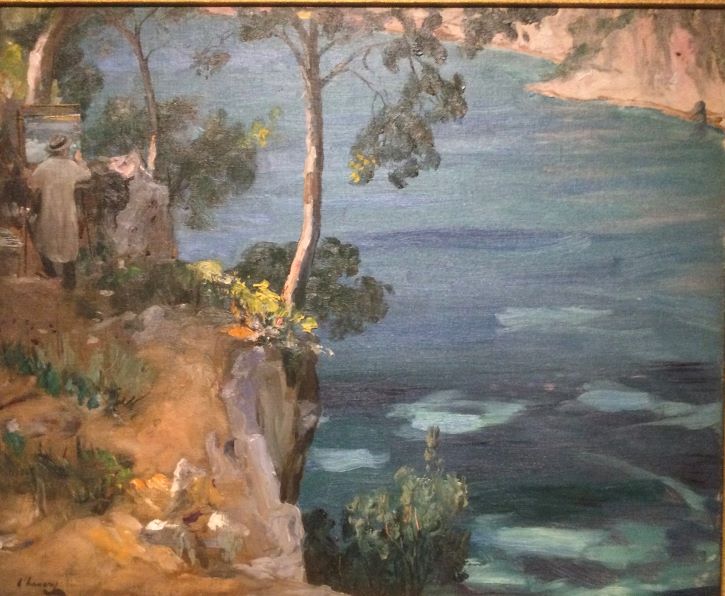
For one who lived most of his life in London, the sea must have signified travel, escape and adventure – but what did it really mean for the artist in him? Was it a test? Did he feel challenged by its changing moods? Or was he just repeating himself to satisfy a market? The seascapes left in Lavery's studio at the time of his death in 1941 indicate that for the successful portrait painter, neither these, nor landscapes, nor other on-the-spot sketches, were a primary market. Many had been given away. Why would one hoard them? Yesterday's triumphs were only valuable if they helped achieve today's answer to the inner urge.
Our primary evidence comes from those winters on the North African hilltop: a daily obsession drove Lavery to place himself in front of the ocean and draw the brush across the canvas from side to side. In such sweeps of colour, space alone is given presence: the eye travels over it and into it. There are no convenient spatial cues – no trees, hills and houses, as in a landscape. Only when he spots a passer-by or a distant steamer does this journey into aerial atmospherics take on a defined pictorial form. No two encounters with the sea were ever the same. Eye, hand and brain mimicked its measure. Time slowed to the pace of the tide. Lapping waves were the metronome, as the palette sounded its secret chord.
Kenneth McConkey, art historian and guest curator of 'Lavery On Location'
'Lavery On Location' continues at the Ulster Museum in Belfast until 9th June 2024. It is then showing at the National in Edinburgh from 20th July to 27th October 2024

